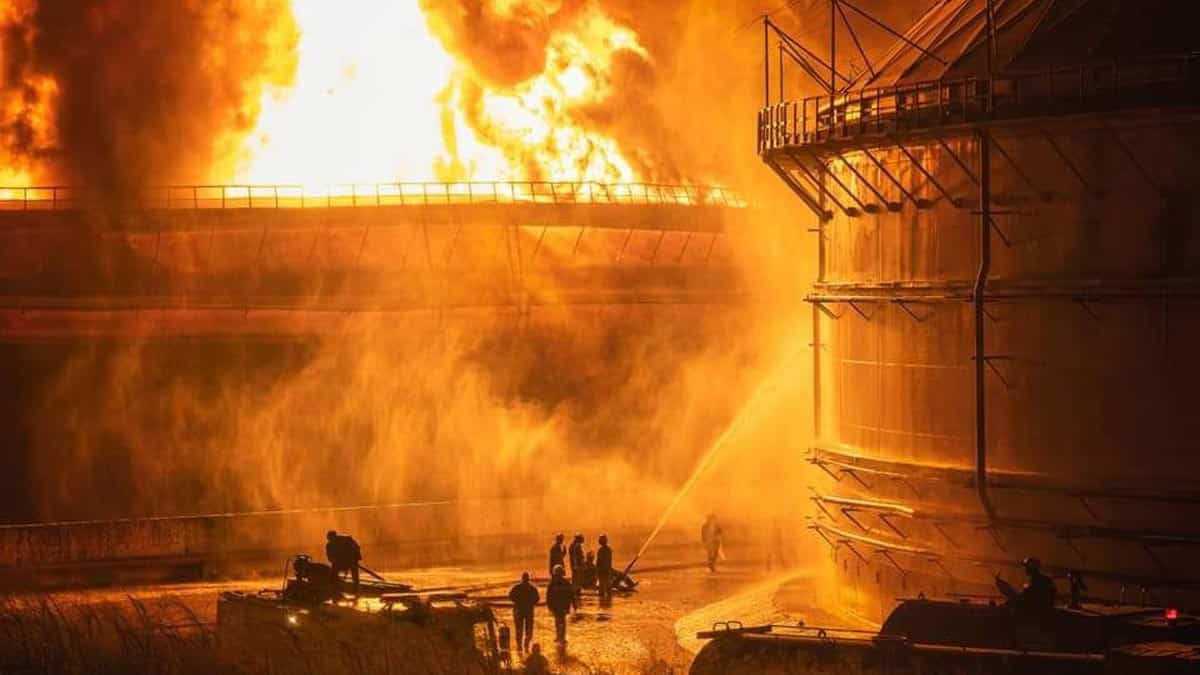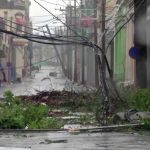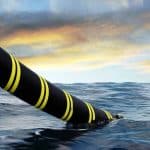Fire in Matanzas: explosion of a fuel tank leaves several people injured

The fire and explosion of a fuel tank, which occurred this Friday around 7:00 p.m., at the Matanzas supertanker base is the news of the last hours in Cuba.
The incident is the worst of its kind in Cuba and continues to monopolize the main news in Cuba today, after more than 15 hours without being put out.
According to government sources, the fire occurred after a lightning strike in the 55,000 liter storage tank in the Matanzas Industrial Zone, a place where oil tankers usually unload fuel.
Several Matanzas journalists say that after the first explosion there have been three others which have so far injured 80 people: many in critical condition and in danger of death. One fire man 24 years old died because of the injuries. 17 people are still missing.
Among the injured are journalists covering the news, local authorities and members of the Fire Department.
So far it is not known if there are any more fatalities, but several eyewitnesses estimate that they may begin to be reported in the next few hours.
Firefighters, forces of the Minint, the FAR and personnel of Unión Cuba Petróleo (CUPET) have not been able to suffocate the flames.

As of early morning hours of August 6, three tanks are reported to be affected. There are fears that the fire could damage the nearby Antonio Guiteras thermoelectric plant, which was also affected by an electrical discharge last July.
According to the Civil Defense, 800 people were evacuated from the areas surrounding the incident and from the industrial zone of Matanzas. Others had left their homes in fear after the first explosion.
The air and the poor lighting during the night and early hours of Saturday morning affected the work.
The northeast wind directed the flames towards another tank with a capacity of 50 thousand cubic meters and large volumes of fuel and, for this reason, four other explosions occurred in a second tank.
Matanceros report that from all over the city it is possible to see the flames, and the dense column of black smoke covers a large part of the territory.
The powerful fire can even be observed from satellite images, through infrared images.
More than a dozen ambulances have taken the injured to the Hospital Clínico Quirúrgico Faustino Pérez, where they are being treated for serious and minor burns.

What happened in Matanzas?
In the afternoon hours of this Friday, an electric shock hit the cover of tank number 52 of Empresa Comercializadora de Combustibles de Matanzas, located in the industrial zone, approximately one kilometer from the city, a place popularly known as Base de Supertanqueros.
After the loss of the cap, the tank, which contained 26 thousand cubic meters of domestic crude oil, 59% of its capacity, caught fire.
The Fire Department of Matanzas and other neighboring provinces arrived at the site of the fire to try to control it, but after more than 15 hours of work it has not been possible, and the fire has spread to other tanks.
These are the largest fuel tanks in Cuba, they are vertical tanks with a capacity of 50,000 m3. They are 60m in diameter (more than half a block) and their height is around 20m. Their roof is a fixed dome and this has been something that has been something that complexity the extinction of the fire, explained Rolando Issac, in a commentary in Cubadebate.
“This is not the first time it happens in Cuba, over the years many fuel tanks catch fire because they are struck by lightning. These fires are complex to put out. For this specific tank many technical resources and forces are needed”.
After the loss of the cap, the tank, which contained 26,000 cubic meters of domestic crude, 59% of its capacity, caught fire.
The Fire Brigade of Matanzas and other neighboring provinces arrived at the place of the incident to try to control the fire, but after more than 12 hours of work it has not been possible, and the fire has spread to other tanks.

These are the largest fuel tanks in Cuba, they are vertical tanks with a capacity of 50,000 m3. They are 60m in diameter (more than half a block) and their height is around 20m. Their roof is a fixed dome and this has been something that has been something that complexity the extinction of the fire, explained Rolando Issac, in a commentary in Cubadebate.
“This is not the first time it happens in Cuba, over the years many fuel tanks catch fire because they are struck by lightning. These fires are complex to put out. For this specific tank many technical resources and forces are needed”.
How do you extinguish a fuel tank fire?
Fires in fuel tanks are among the most difficult to extinguish and the most feared by firefighters.
In these cases, water and foam extinguishing systems do not usually work, since the tanks have a large surface area, sometimes more than 40 meters.
No matter how strict the protocols may be, farms or flammable fuel storage tank bases are a high risk by their very nature.
One of the main problems in extinguishing this type of fire is that existing extinguishing methods often do not dispense foam with the intensity and quantity required.
Machinery malfunctions, attacks and even electrical storms loaded with dangerous lightning can unleash an inferno of flames in these deposits. This is what is currently happening at the super tanker base in Matanzas.

Fires in fuel depots involve a large mobilization of firefighters and personnel to smother the flames.
In these cases, large quantities of water and foam are usually used -thousands and thousands of liters of foam and millions of water- which is dispensed by several high volume pumps.
We do not know at this time what technical capacity is available to quell these types of fires in Cuba, although a Cubadebate forum member named Rolando Issac explained how these fires are dealt with in Cuba.
“The first thing to do is to cool down so that it does not deform and the fuel comes out. This tank needs about 100 liters of water per second continuously to say that it has been successfully cooled. In fact, if the tank is not cooled properly, it cannot be foam quenched. At the same time, neighboring tanks must be cooled to prevent them from catching fire due to irradiation.
“Afterwards, a foam attack must be prepared, which in this case, if the tank has already lost its roof, is very complicated, because powerful foam jets must be used to ensure that the foam is spread over the entire surface of the tank. Many times the foam is destroyed by the fire flame itself and is not extinguished, so not having the resources to put it out, it is left to burn by itself and the fuel is spent.
“Analyzing the photo we can see that there is a lot of heat release and it will be very difficult to put out this fire. In fact, it is not seen that the tank is cooled, the heat itself already deforms the walls to the height of the liquid.
“The biggest danger is that the tank will boil over. That is to say that it begins to throw balls of fuel to the surface, or that the water at the bottom evaporates and makes a steam piston from the inside that buoys all its fuel and destroys everything, as already happened in Venezuela, Tacoa in 1984”, concluded Rolando Issac.

In 2005 a depot near London suffered a similar fire. It damaged 22 storage tanks and destroyed businesses and homes in a total radius of 2 kilometers.






